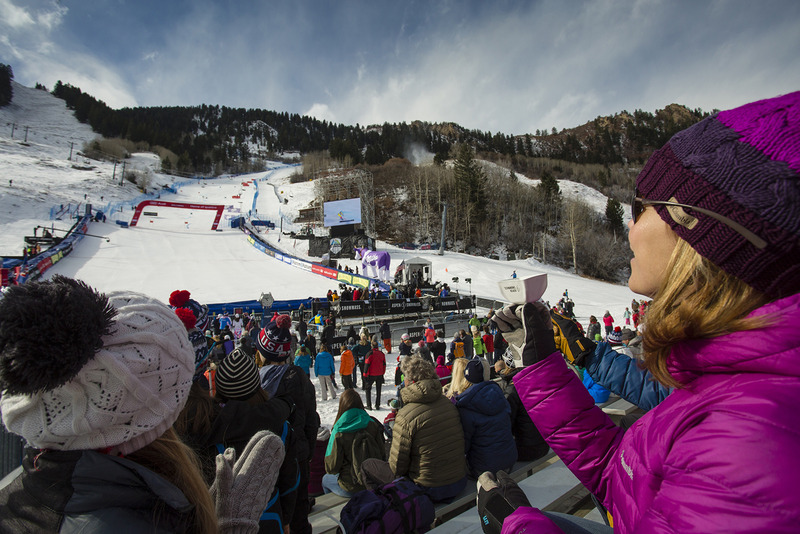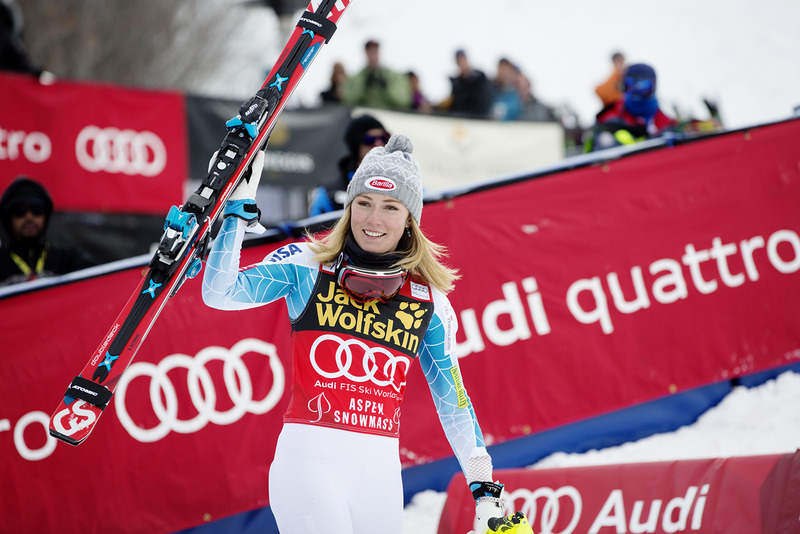The Local newsletter is your free, daily guide to life in Colorado. For locals, by locals.
For the first time in 20 years, the final competitions of the prestigious FIS Alpine Skiing World Cup, the International Ski Federation’s premier alpine skiing circuit, will be held in the United States. And it’s happening right here in Colorado.
From March 15–19, Aspen Mountain will host the 2017 Audi FIS Ski World Cup Finals, which includes men’s and women’s downhill, super G, slalom, and giant slalom races, as well as the exciting Alpine Team Event, where teams of two men and two women compete against other national teams in a head-to-head slalom.

While in Colorado, the world’s fastest skiers, including locals Lindsey Vonn and Mikaela Shiffrin, will not only vie to win the week’s races, but also to hoist the coveted crystal globes presented to the winners of each discipline during the 2016–17 season. The top male and female skiers will also be awarded with Overall World Cup titles—an honor for which Shiffrin is currently the leading contender.
On Wednesday, March 15, the racers will compete on the iconic “America’s Downhill,” a short and technically demanding course on which it’s difficult to recover from even the slightest mistake. “America’s Downhill is comparable to the best tracks in the world,” says Casey Puckett, a former World Cup alpine skier who last competed on this course in 1998. The key to victory, he says, will be a combination of fast skis, good gliding skills, and choosing an optimal line through the gates to avoid losing any time.
From the start, racers have only a short downhill pitch on which to pick up speed before dropping into an aerodynamic tuck and gliding across a wide, flat shoulder. From there, the course plunges down two expert runs—Aztec and Spring Pitch—whose impressively steep drops create one of the FIS circuit’s most demanding sequences of fast-paced turns, says Puckett.
The most critical turn, according to A.J. Kitt, a former U.S. Ski Team member who specialized in downhill, is the mid-mountain Airplane Turn, because the speed that racers carry through it will dictate their pace for the last 20 seconds of the race, including the steep, final plunge to the finish line. All told, the course descends 2,303 feet in 1.67 miles—a distance the racers typically cover in less than 1 minute, 45 seconds.
“It’s one of North America’s most classic runs,” says Kitt, who believes the winning racer will be the one whose mind stays ahead of the action. “On race day, the speed is always higher than in training because you are charging for the win. You need to be way ahead of it mentally.”
The course has been the site of intense competition—as well as heated controversy—in the past. These include the thrilling victory of Buddy Werner, who fell onto his back during a race, and the 1984 win by American “Wild Bill” Johnson, who twice lost his footing before somehow regaining control.
In 1993 and 1995, Kitt won on this course—only to have both victories taken away a few days later by the International Ski Federation in controversial decisions related to poor course conditions. Yet despite Kitt’s intense disappointment, America’s Downhill has always felt like a homecoming to him. Since ski racing has always been a European-dominated sport, he says, whenever the circuit comes to Aspen, it’s a chance to show that Americans also take pride of ownership in this sport and will “defend our place in history.”
With the likes of Vonn, who has won four women’s overall titles, and Shiffrin, who is chasing her first, charging down this iconic course mid-month, Aspen Mountain will almost certainly provide an opportunity for American women to do just that.










